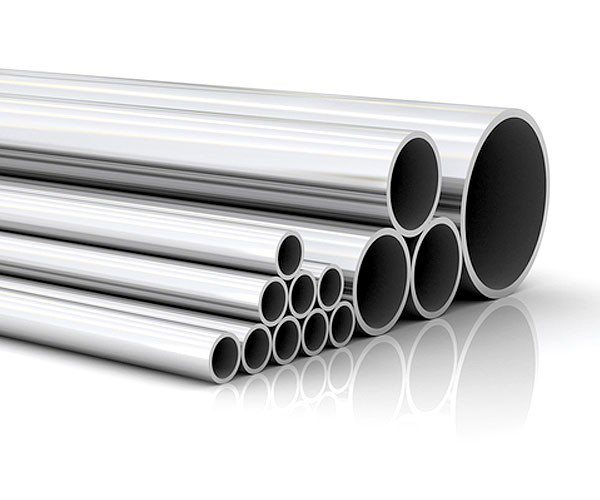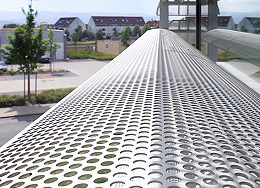
Thống kê
| 1882777 | |
| Số người đang online | 1 |
| Số truy cập hôm nay | 188 |
| Số truy cập tháng này | 57918 |
Quảng cáo
The definition of stainless steel

|
Alloy Steel is the main ingredient is iron (Fe), with carbon (C), from 0.02% to 2.06% by weight, and some other chemical elements. They increase the stiffness, limited movement of iron atoms in the crystal structure under the influence of many different causes. Different quantities of elements and their proportion in the steel aimed control quality objectives as hardness, elasticity, pliancy, and the breaking strength. High carbon steel with rate may increase hardness and elongation strength than iron, but more brittle and fragile. The rate of
carbon dissolved in the iron maximum is 2.06% by weight (in austenitic condition) occurs at 1,147 degrees Celsius; if a higher carbon and lower solubility temperature in the manufacturing process, the product will be cementation with less effort. Blended with higher carbon 2.06% will be cast iron. Steel is also distinguished from wrought iron, wrought iron because there is little or no carbon, usually less than 0.035%. Today we call steel industry (not called iron and steel industry), but in history, it's 2 different products. Today there are a few types of steel in which the carbon is replaced by a mixture of other materials, and carbon if, just as unpopular.
Before the Renaissance it was made of steel with less effective methods, but after the 17th century to find ways to be more effective, the use of steel becomes more popular. With the invention of the Bessemer process to keep the 19th century, steel has become a commodity to be mass produced less costly. During the manufacturing process such as better refining oxygen blowing method, the lower the production cost and increase the quality of the metal. Today, steel is one of the most common materials in the world and is a key component in the construction, furniture, industrial mechanics. Typically steel is divided into several levels and the rating agencies confirm its own standards.
Characteristic
Like most metals, basically, iron nonexistent in the Earth's crust in the form of the element, it only exists when combined with oxygen or sulfur. Iron in the form of minerals including Fe2O3-a form of iron oxide in the mineral hematite, and FeS2 - iron sulphide ores. Iron ore is taken by reducing oxygen or iron in combination with a chemical element, such as carbon. This process is called smelting, was first applied to the metal with a lower melting point. Copper melts at over 1,080 ° C temperature, while tin melts at 250 ° C. Mixing with carbon in iron is 2.06% higher than cast iron melts at 1,392 ° C. All this temperature can be achieved with the old methods have been used for at least 6,000 years ago. When the oxidation rate of about 800 ° C increase, the metal must take place in an environment with low oxygen.
During the mixing of carbon steel and iron can form a lot of different structures with different properties. Understanding this is very important to have quality steels. At normal temperatures, the most stable form of iron is iron ferrite has centered cubic structure (BCC) or iron, a soft metal material, can decompose a small amount of carbon (less than 0.02% temperature 911 ° C). If over 911 ° C, the ferrite will move from the center of mass (BCC) to the surface center (FCC), called austenite, this type of material is a soft metal, but it may degrade more carbon (2.06 % carbon 1,147 ° C temperature). One way to remove carbon from the austenite is kind of mixed cementation out there, and for pure iron in the form of a mixture of ferrite and create cementation-ferrite. Cementation is a chemical compound with the formula Fe3C.
Modern steel
Modern steel is made by many different groups of alloys, depending on the chemical composition of the elements for us in which products suit their individual usage. Carbon steel consists of two main elements are iron and carbon, accounts for 90% the proportion of products made out of steel. Low alloy steel with high durability adds a few other elements (typically <2%), representing 1.5% of manganese, as well as the cost of steel increased. Low alloy steel is mixed with other elements, usually molybdenum, manganese, chromium, or nickel, during a total not exceeding 10% of the total weight. The stainless steel and stainless steel special use at least 10% chromium, in many cases combined with nickel, aimed against corrosion. Some types of stainless steel with non-magnetic properties.
Modern steel types available as tool steels are alloyed with a significant number of elements such as tungsten and cobalt as well as other factors vainguyen reached saturation capability. These substances precipitating agent improves the thermal properties of steel. Steel instruments are applied on the metal cutting tools, such as drills, turning, milling cutters, razor blades and multiple applications for high hardness materials needed.
|
Liên kết website
Hỗ trợ trực tuyến
-
 Liên hệ ngay.Email:ĐT: (08) 6682 3335 - Fax: (08) 6256 2218
Liên hệ ngay.Email:ĐT: (08) 6682 3335 - Fax: (08) 6256 2218
Ngày giờ hiện tại
13/9/2025
clock




